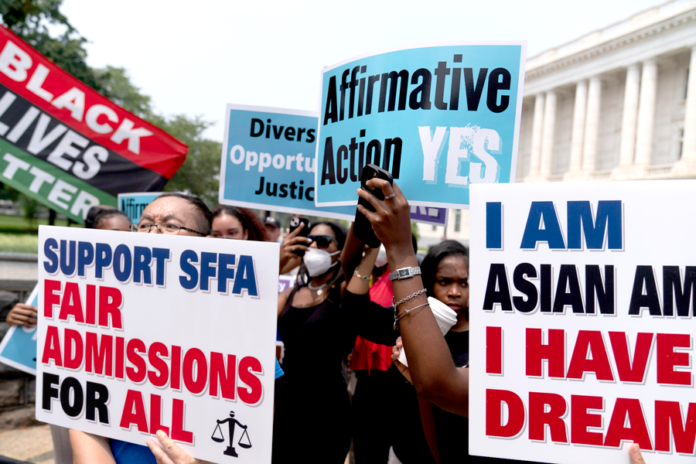
For many years the children, grandchildren, and great-grandchildren of Legacy (former students and donors) have been easily admitted into the crème de la crème of the universities.
It should be clear that no Asian student groups were not part of this case in front of the Supreme Court. Racist think tanks used the Asian community without permission to file a lawsuit against Affirmative Action.
This new Court decision was a slap in the face to all students of color as it eliminated Affirmative Action.
In past years students of color were not invited, and many obstacles were placed before them that would complicate their becoming students. Affirmative Action was not automatic.
In 1968 although Affirmative Action supposedly existed, there were few, if any, students of color at the University of Colorado. First, an entrance exam was difficult for those of color to pass. And then there was the issue of funding. It was an expensive school. I arrived in the fall of 1966 to find that most blacks on campus were athletes, and the other 10 Latinos/Hispanics were from well-to-do families. It seemed that somehow, I, a junior college transfer, could sneak away from the entrance exam as a transfer and was in without funding. I struggled to hold down multiple jobs to stay in school and live in Boulder, Colorado. At this point, this premier University had about 20,000 students.
CU was and is considered a party school, given the economic wealth of the families whose children populated the campus and the nearby ski slopes. One could go to school, skiing, and rock climbing in some of the most beautiful parts of Colorado.
Some of the wealthy female students occasionally opened up their sorority dining halls to me since I was a fellow actor.
When Dr. King was killed, it changed my view of my University. I had not thought much about the racial issues at the University and was concentrating on being a successful student.
Dr. King was killed on April 4th, 1968, and within hours SDS (students for a democratic society) were organizing the response to this murder. By the time the SDS president showed up at the small house I had shared with Vicente Martinez, SDS had organized the Black athletes. And they knew that I had visited the Radical Bookstore, which was considered radical because it had four books on black, two on women, and two on the environment plus, there were always open and active social change discussions. But I still can’t figure out how they knew where I lived. Vicente and I had very few visitors.
The SDS leader took me to campus that night, where white male students would enter the segregated women’s dorms, find women’s panties and throw them out the windows to the cheering throng below. This practice was called Panty Raids. It was clear that something had happened and that white students did not know how to react.
During the next 60 days, the SDS leadership helped us to organize demonstrations, teach-ins, and media events, plus bring shape to a list of demands.
In the end, the University removed the entrance exams, created programs and scholarship monies and minority staff (I was offered one of those jobs, but I refused. Standing up against racism brought all the racists out of the woodwork, and I was tired of them and the University). The athletes had a lot of demands against Football Coach Eddie Crowder, who would not allow blacks to play quarterback, and should they date any students who were not black, they would lose their scholarship. We got all of that removed as a result of our efforts.
It was a fact that while Affirmative Action existed in law, it did not exist in practice. Through our demonstrations, we forced the University to move into the future.
Now the Supreme Court has pushed out people of color and enshrined the Legacy Students. Again, we must raise our voices, publish the names of all the Legacy Students, and ask for a real fair program for admissions.
Oh yes, there is still a door open for athletes, most of whom will be of color, who help the University raise millions of dollars as the school team wins conferences, bowl games, and perhaps a national title.

























